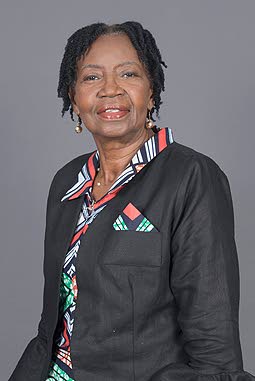Self-liberating strategies of freed Africans in Tobago

Dr Rita Pemberton
THE PLANTING community of Tobago made no secret of its members' intention to prevent the liberation of the African population, despite the declaration of the termination of apprenticeship on August 1, 1838. They openly expressed their opposition to what they considered the “premature” ending of the system, which was initially to last six years.
The apprenticeship system was part of the compensation package offered to planters for the loss of their property at emancipation, the cost of which was borne by the freed Africans. The arrangement guaranteed the planters labour for six years – four of which were to come from the skilled enslaved workers, whose natural inclination to savagery, it was asserted, was tempered because they worked in close contact with the “civilised” white population and were in a better position to make use of freedom than the unskilled workers.
The unskilled workers, who were mainly the field workers, constituted the largest segment of the enslaved workforce, and this class of workers was carded to serve a six-year apprenticeship period. The stated rationale for the additional two years was that, because these workers spent most of their working life in the cane fields, away from the civilising influences of Europeans, it was appropriate for them to acquire the required level of civilisation and be adequately prepared for freedom during the additional two-year period.
However, this argument was a smokescreen to cover their real concerns – their labour needs. The success of the sugar crop was highly dependent on the availability of workers for planting and reaping; hence the greatest need of the sugar planters was for field workers. The importance they attached to this class of workers is demonstrated by the haste with which they sought to increase their numbers by downgrading some skilled domestic workers into the unskilled class. This was an attempt to guarantee an adequate supply of field labour.
However, this demotion added fuel to the planter/worker conflicts on the island during the immediate post-emancipation years.
As during the period of enslavement, the freed Africans were very aware of planter intransigence and their own need to assert themselves to attain the freedom they craved. As a result, they engaged in a range of activities through which to make emancipation real, despite the contrary efforts of the planters. These liberating strategies helped them overcome some of the obstructions deliberately placed to keep them in a state of enslavement.
First and foremost, it was their desire to own land, but this was not easily attained, because inflated prices and planters' refusal to sell made land purchase a challenge. The free workers sought and obtained access to land as part of the terms of labour negotiated with the planter/employers.
Although wages for estate labour were very low, coins were scarce on the island so in return for labour, some wages were paid in kind, often with access to land as garden plots or pasture for their animals. They worked on several estates from which they obtained access to land, and using these plots, the freed African workers were able to engage in income-generating activities which increased their earning capacity even during the economic crises the island faced during the second half of the 19th century.
Secondly, they sought to remove themselves from planter control by establishing homes off the estates.
In order to manipulate worker desire into a plantation benefit, planters offered workers land for rent. While their intention was to create a pool of labour close to the estates which would guarantee a supply of labour, the workers used these plots not only to build their homes but also for gardens which provided food and surplus items for sale in the market. These settlements developed into communities which served as important centres for the development of the free society.
Thirdly, the workers engaged in what is perhaps best described as liberating economics. They worked for several employers and in a rage of activities such as agriculture, fishing, hunting and market vending. They sought independent employment by providing services to their communities which helped reduce their dependence on the exploitative plantation shops, which sold poor-quality goods at inflated prices and kept workers in perpetual debt.
They established small businesses such as parlours and later shops, bakeries and butchers' shops. Skilled craftsmen such as shoemakers, tinsmiths, dressmakers and tailors offered services to their communities.
Some women made confectionery, baked goods and fried fish, which they peddled on trays through the community, selling items prepared in their homes. They reared animals which provided their banking needs in the absence of a bank: animals were sold when extra money was needed for an expensive undertaking.
Fourthly, but by no means last, the free communities facilitated cultural liberation. The traditional African practices which were not allowed during enslavement could be practised more openly in the communities by celebrations of all types, birthing traditions for mother and baby and funerary practices.
The freed Africans were also able to exercise greater control over their food and foodways, and African foods, such as accra, coocoo, callaloo, dishes with ochroes and pound plantain became established among Tobago’s food traditions.
It was evident that in Tobago after 1838, according to one historian, “Emancipation would come not from the planters but in spite of them.”


Comments
"Self-liberating strategies of freed Africans in Tobago"